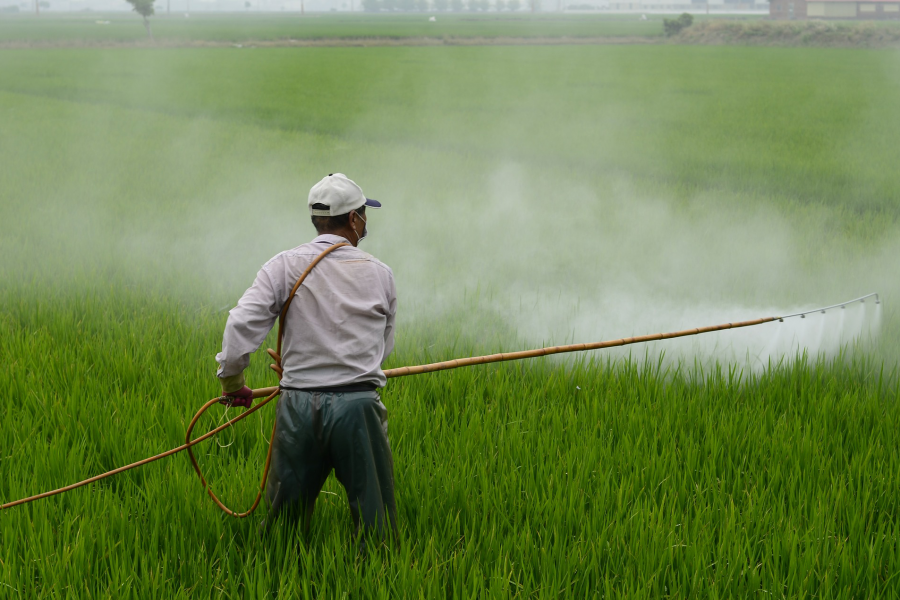
Resistance to antibiotics and pesticides is rising at alarming rates. Yet, currently there is no global framework to track the threat to human health and crops.
A group of researchers including David Hawthorne, Associate Professor of Entomology at the University of Maryland, have now published the first estimates of antibiotic and pesticide “planetary boundaries” in the journal Nature Sustainability. The researchers, who are part of the working group “Living with Resistance,” supported by the National Socio-Environmental Synthesis Center (SESYNC) at the University of Maryland, suggest that if resistance to antibiotics and pesticides goes beyond these boundaries, societies risk large-scale health and agricultural crises.
The new research concludes that Gram-negative bacteria, a group of bacteria that includes well-known pathogens such as Salmonella, Klebsiella pneumoniae, and E. coli, are already beyond the “planetary boundary”, as some strains of several species are already resistant to all or most antibiotics tested.
“It appears as if we have crossed a tipping point for Gram-negative bacteria, with doctors increasingly reporting untreatable infections. We now need to manage these ‘nightmare bacteria’ differently,” says lead author Peter Søgaard Jørgensen from the Global Economic Dynamics and the Biosphere programme at the Royal Swedish Academy of Sciences and Stockholm Resilience Centre, Stockholm University.
“Without new approaches, going to hospital in the future will increasingly become a gamble. More patients will get unlucky, and become infected with untreatable or hard to treat bacteria. This is an urgent risk to human society,” says Søgaard Jørgensen.
The team defined and assessed the state of the planetary boundary for six types of resistance including: antibiotic resistance in Gram-negative and Gram-positive bacteria; general resistance to insecticides and herbicides and resistance to transgenic Bt-crops and glyphosate resistance in herbicide resistant cropping systems. All six assessed boundaries are in zones of increasing risk and three out of six are in zones of high regional or global risk.
Pesticide resistance is an urgent concern, particularly resistance to glyphosate (the core ingredient in the herbicide Roundup) and insecticidal Bt-toxins in transgenic crops, which are now widespread.
The researchers’ assessment suggests that some herbicides and Bt toxins have already reached regional boundaries with some farming areas reporting large-scale resistance to these pesticides.
“A benefit of crops resistant to glyphosate is that they help farmers control weeds already resistant to other herbicides,” says Yves Carrière, an author on the study from the University of Arizona. “But rapid and widespread evolution of resistance to glyphosate in many weeds has sometimes left few effective herbicides for the control of weeds with multiple resistance.”
“We need to consider sensitivity of the target pathogens and pests to these chemicals as a valuable resource to be preserved through proper use of the antibiotics and pesticides,” notes Hawthorne.
Carrière adds, “without better weed management programs it is just a matter of time before this herbicide planetary boundary is also transgressed”
The historical evidence suggests that reversing the spread of resistance is unlikely explains Søgaard Jørgensen. “Once resistance becomes established, it is unlikely to completely disappear again.” In addition, increasing efforts to fully eradicate bacteria and pests is likely to make matters worse. Instead, new strategies are needed that promote the growth of bacteria and pests that are susceptible to pesticides and antibiotics, at the expense of those with resistance.
“Susceptible insects, plants and bacteria provide a benefit to society, promoting them can be part of a new and broader strategy of chemical de-escalation for the 21st century,” says Søgaard Jørgensen. These new strategies need to promote the importance of sustaining susceptibility to pesticides and antibiotics and account for the many other services that microbes, plants and insects provide to us through e.g. pollination, biological control, and benefits to human health.
“These strategies are urgently needed as complements to development of new antibiotics and pesticides. Together they have the potential to bring us back inside the boundaries to a zone of lower risk”, says Søgaard Jørgensen.
Citation:
Jörgense, S.P., Carriere, Y. 2018. Living with Resistance project, Antibiotic and pesticide susceptibility and the Anthropocene operating space, Nature Sustainability, doi: 10.1038/s41893-018-0164-3